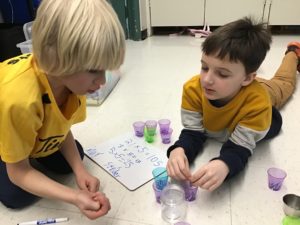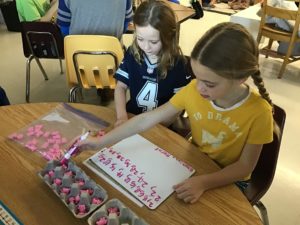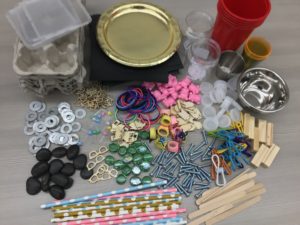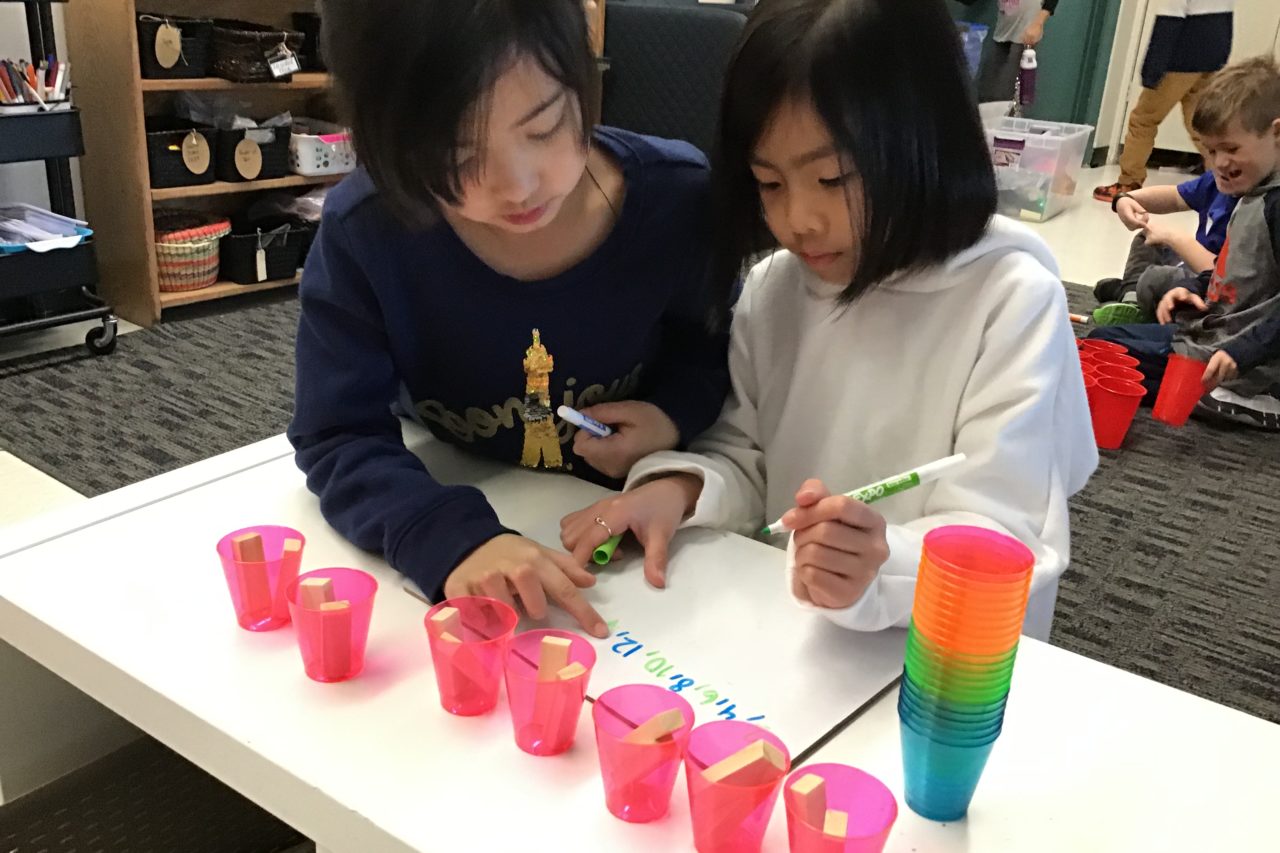Making mathematics instruction engaging, purposeful, and differentiated are some of our goals, as teachers. We also keep those goals in mind as we consider students’ needs, curriculum, and assessment.
- In what ways can manipulatives be purposefully used in order to differentiate learning?
- How might we encourage communication of mathematical thinking as a means of assessment?
- How do we ensure that students’ mathematical learning is robust and transferable?
In Choral Counting and Counting Collections, authors Franke, Kazemi, and Turrou offer insight into the rich learning opportunities available through counting collections of manipulatives. Students in grade 2G at Elmdale School, have been counting collections of materials as a way to develop conceptual understanding in mathematics. Through this process, the classroom teacher designs engaging experiences to help ensure that students’ understanding of mathematics is more than just rote learning.

When counting collections, students are provided with a variety of materials in large quantities (i.e.: popsicle sticks, bolts, stones, plastic gems). As well, storage tools such as paper plates, egg cartons, sorting trays, and plastic cups are used to separate the collection and to aid in counting. Students are given choice by being allowed to select a manipulative as well as a storage tool. The teacher presents students with a question or problem, such as, “How might we count the items in your collection?” Students, in groups of two or three, are encouraged to collaborate, count their collection, and record their thinking on small white boards. Integral to the process, is for students to share their thinking with other classmates.
As teacher, Jo-Anne Giesbrecht, observed and interacted with students, she was able to determine any  misconceptions and immediately intervene with a brief mini lesson tailored to that student. A student who showed readiness to count by ones past twenty five had support through manipulatives to gain that conceptual understanding at a concrete level. Some students showed a readiness to connect counting collections to fractions. For example, three cups stacked together with 5 bolts in each cup created a total of 15 bolts. Students could identify, visually, that one third of 15 is 5. Other students asked questions relating skip counting to multiplication. Their interest and curiosity proved to be a gateway to a teachable moment. In context, these students were supported while they transferred their concrete understanding to a symbolical representation of multiplication.
misconceptions and immediately intervene with a brief mini lesson tailored to that student. A student who showed readiness to count by ones past twenty five had support through manipulatives to gain that conceptual understanding at a concrete level. Some students showed a readiness to connect counting collections to fractions. For example, three cups stacked together with 5 bolts in each cup created a total of 15 bolts. Students could identify, visually, that one third of 15 is 5. Other students asked questions relating skip counting to multiplication. Their interest and curiosity proved to be a gateway to a teachable moment. In context, these students were supported while they transferred their concrete understanding to a symbolical representation of multiplication.
 As grade two students engaged in the task, it was evident that the provocation allowed for various entry points. Students who were learning to count forwards by ones had opportunity to work at their level, while students who were able to count backwards by twos, fives, and tens were able to use the same materials and the same format. Students recorded their thinking on white boards, shared their method with peers, and took photos of their symbolic or pictorial documentation. Finally, students posted their photos on Seesaw with verbal explanations, as a means of sharing their learning with their families and teacher. Counting Collections provides a purposeful, hands-on learning experience for students. It enables them to explore concepts in a developmentally appropriate, concrete manner. As well, formative and summative assessment can be achieved in an authentic, individualized, playful format.
As grade two students engaged in the task, it was evident that the provocation allowed for various entry points. Students who were learning to count forwards by ones had opportunity to work at their level, while students who were able to count backwards by twos, fives, and tens were able to use the same materials and the same format. Students recorded their thinking on white boards, shared their method with peers, and took photos of their symbolic or pictorial documentation. Finally, students posted their photos on Seesaw with verbal explanations, as a means of sharing their learning with their families and teacher. Counting Collections provides a purposeful, hands-on learning experience for students. It enables them to explore concepts in a developmentally appropriate, concrete manner. As well, formative and summative assessment can be achieved in an authentic, individualized, playful format.
 When considering implementing Counting Collections in your classroom, be assured that a variety of materials can be suitable. Re-purposing used materials is a financially feasible way of gathering manipulatives to create your own class’ collections for counting (i.e.: reusing bottle lids, marker tops, small pencils, bread tags, etc.). Hanover School Division learning coaches have created four Counting Collections Kits. Each kit contains a class set of materials that includes a variety of manipulatives and storage tools. Currently, there are two grade K-3 bins and two grade 3-6 bins available for loan by HSD teachers.
When considering implementing Counting Collections in your classroom, be assured that a variety of materials can be suitable. Re-purposing used materials is a financially feasible way of gathering manipulatives to create your own class’ collections for counting (i.e.: reusing bottle lids, marker tops, small pencils, bread tags, etc.). Hanover School Division learning coaches have created four Counting Collections Kits. Each kit contains a class set of materials that includes a variety of manipulatives and storage tools. Currently, there are two grade K-3 bins and two grade 3-6 bins available for loan by HSD teachers.
Please contact Lisa, Melissa, Monica, or Rhonda if you would like to borrow a kit or if you would like more information about Counting Collections.
